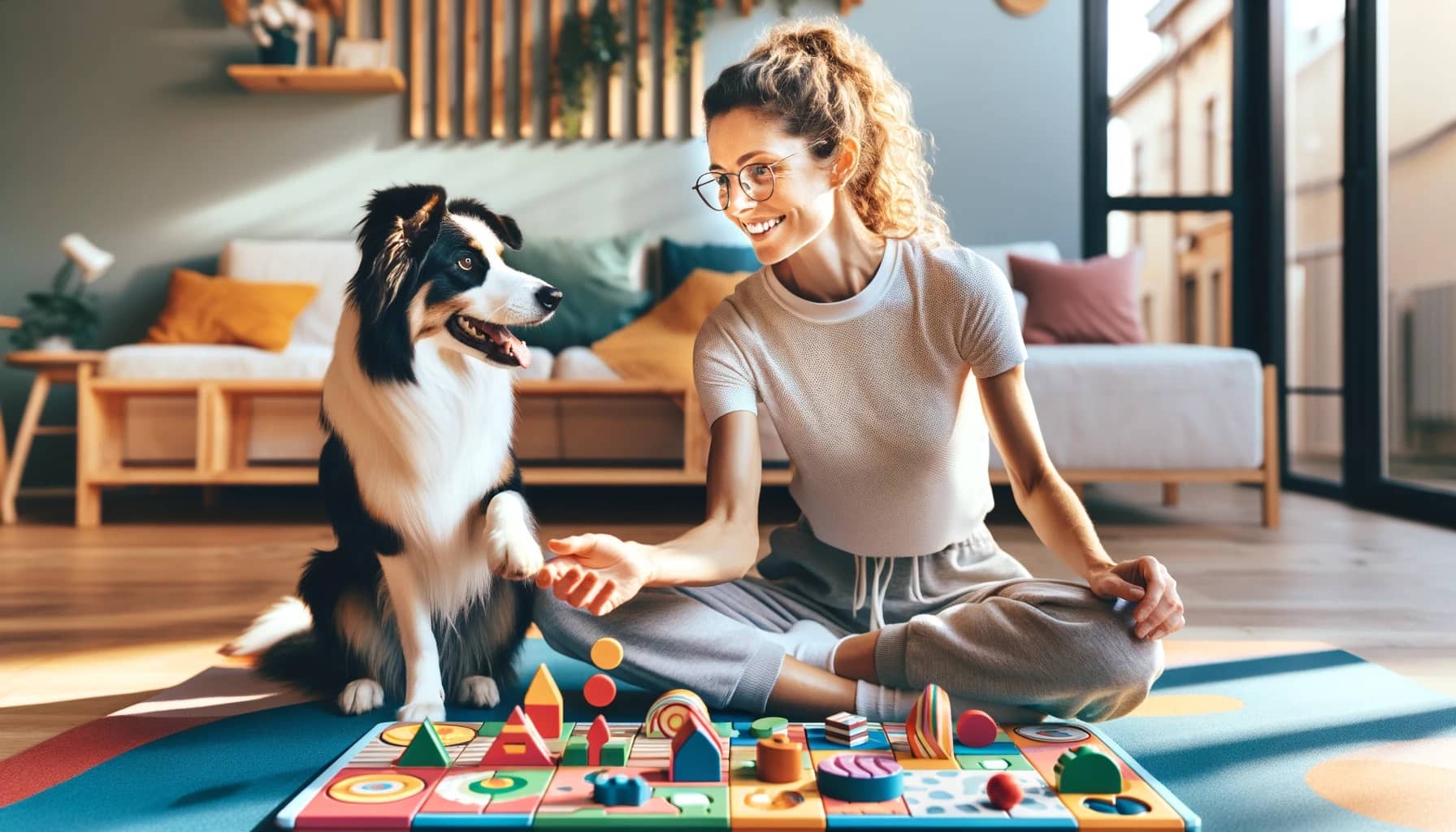Just like humans, dogs need mental stimulation to stay sharp, happy, and healthy. Engaging your dog in mentally stimulating activities and teaching them new tricks can help prevent boredom, reduce destructive behavior, and strengthen your bond. In this article, we’ll explore the top tricks to boost your dog’s intelligence and keep them mentally stimulated.
1. Hide and Seek
Hide and seek is a fun game that encourages your dog to use their nose and problem-solving skills. Start by having your dog stay while you hide, then call them and reward them with treats and praise when they find you. As your dog gets better at the game, make the hiding spots more challenging.
2. Puzzle Toys
Puzzle toys are designed to challenge your dog’s mind and encourage problem-solving. These toys often involve hiding treats inside and require your dog to figure out how to access them. Puzzle toys come in various difficulty levels, so you can choose one that suits your dog’s skill level and gradually increase the challenge as they improve.
3. Scent Work
Scent work involves teaching your dog to use their nose to find specific items or people. Start by teaching your dog to find a treat hidden under one of several cups, then gradually increase the difficulty by adding more cups or hiding the treat in different locations. You can also teach your dog to find specific scents, such as essential oils, which can be useful in various dog sports and activities.
4. Trick Training
Teaching your dog new tricks is not only mentally stimulating but also helps strengthen your bond and improves their overall obedience. Start with simple tricks like “shake” or “spin,” then gradually move on to more complex tricks like “play dead” or “roll over.” Use positive reinforcement and keep training sessions short and fun to keep your dog engaged.
5. Agility Training
Agility training involves teaching your dog to navigate an obstacle course, which includes jumps, tunnels, and weave poles. This type of training is mentally and physically stimulating and helps improve your dog’s coordination, confidence, and problem-solving skills. You can start with basic obstacles at home and gradually increase the difficulty as your dog improves.
6. Nosework Games
Nosework games are similar to scent work but involve finding a specific scent in a larger area, such as a room or outdoor space. You can use a variety of scents, such as essential oils or even your dog’s favorite toy. Start by hiding the scent in an easy location and gradually increase the difficulty as your dog improves.
7. Interactive Play
Interactive play involves engaging with your dog using toys or games that encourage them to think and problem-solve. For example, you can use a tug toy to play a game of “tug-of-war” or use a flirt pole to encourage your dog to chase and catch a lure. Interactive play not only provides mental stimulation but also helps strengthen your bond and provides physical exercise.
8. Training Games
Training games involve incorporating obedience training into fun, mentally stimulating activities. For example, you can play “red light, green light,” where your dog must stop and sit when you say “red light” and can move forward when you say “green light.” You can also play “hide and seek” with obedience commands, where your dog must perform a command before being released to find you.
Tips for Successful Mental Stimulation
- Keep Sessions Short: Dogs have short attention spans, so aim for 5-10 minute sessions a few times a day to keep them engaged and prevent boredom.
- Use Positive Reinforcement: Reward your dog with treats, praise, and affection when they successfully complete a task or learn a new trick. Positive reinforcement helps encourage desired behavior and keeps training sessions fun and enjoyable.
- Gradually Increase Difficulty: Start with simple tasks and gradually increase the difficulty as your dog improves. This helps prevent frustration and ensures that your dog is always challenged and engaged.
- Vary the Activities: Rotate between different mentally stimulating activities to keep things interesting and prevent boredom. This also helps ensure that your dog is getting a well-rounded mental workout.
- Make It Fun: Mental stimulation should be enjoyable for both you and your dog. Keep sessions positive and upbeat, and always end on a high note with plenty of praise and rewards.
Incorporating mentally stimulating activities and tricks into your dog’s daily routine can help keep them sharp, happy, and healthy. Remember to keep sessions short, use positive reinforcement, and gradually increase the difficulty to ensure that your dog is always challenged and engaged. With time and practice, you’ll be amazed at how much your dog’s intelligence and overall well-being can improve.
